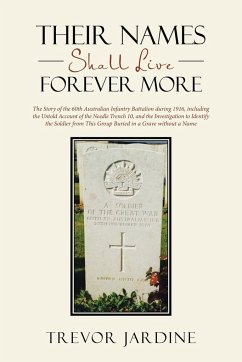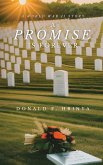This book is a thorough and thought provoking account of the first year of existence of the 60th Australian Infantry Battalion. Interspersed with Divisional, Brigade and other Battalion's perspectives are the personal views of officers and other ranks relating to events and places. Included in the story is an investigation into a previously untold account of a group of soldiers called the "Needle Trench 10" who were killed by a single artillery shell on the 26th November 1916. For more than 100 years the identity of one of these soldiers, buried in the Guards' Cemetery at Lesboeufs, France, has been lost to time. A document, filed in the archives of the Commonwealth War Graves Commission in Maidenhead, England, for over 100 years and only coming to light in 2021, has finally enabled this soldier's possible identity to be established. Also revealed in the same document is the initial burial location of another soldier, wounded by the same artillery shell, and dying later that day whilst on his way to receive medical treatment. Woven throughout the book are the human stories of the battalion's soldiers, including biographies of those killed on the 26th November, with many of the details provided by the descendants of these soldiers. The investigation details how a simple "bookkeeping" entry resulted in families, and descendants of ten of the eleven soldiers who died on the 26th November, being provided incorrect details concerning their deaths. This error has been perpetuated in official documents, publications, online resources, and inscribed in stone since this time.








